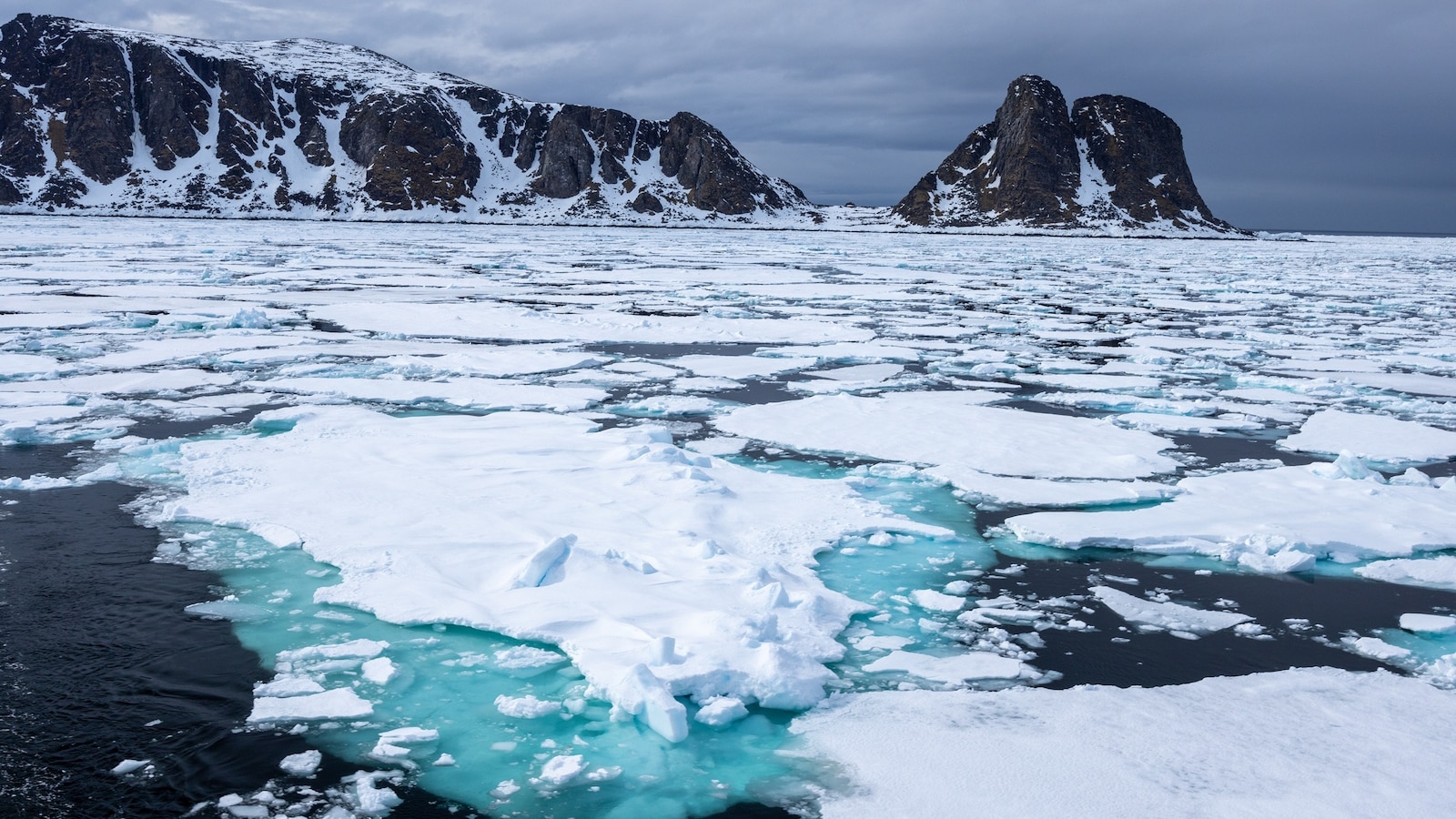Melting permafrost in the Arctic is releasing toxic mercury into the water system, potentially impacting the food chain, scientists say.
Arctic permafrost is melting at rapid rates, potentially putting the food chain and the communities who depend on it in “grave danger,” according to researchers at the University of Southern California who studied the transport of sediment in the Yukon River in Alaska.
As the Yukon River flows west across Alaska to the Bering Sea, the eroding permafrost along the way is adding sediment embedded with mercury into the water, a paper published Thursday in the journal Environmental Research Letters found. The mercury has likely been sequestered in the permafrost for millennia, the scientists said.
“There could be this giant mercury bomb in the Arctic waiting to explode,” Josh West, professor of Earth sciences and environmental studies at USC Dornsife College of Letters, Arts and Sciences, said in a statement.
Glacier with snow-capped mountains,
Tahreer Photography/Getty Images
The researchers analyzed mercury in sediments in riverbanks and sandbars, tapping into deeper soil layers.
They also used remote sensing data from satellites to monitor how fast the Yukon River is changing course — significant because it affects how much mercury-laden sediments are eroded from riverbanks and deposited along sandbars, according to the paper.
“The river can quickly mobilize large amounts of sediment containing mercury,” said Isabel Smith, a doctoral candidate at USC Dornsife and co-author of the study, in a statement.
The rivers are also reburying a considerable amount of mercury, leading the researchers to emphasize the importance of understanding both the erosion and reburial processes.
The addition of the toxic metals poses an environmental and health threat to at least 5 million people living in the Arctic, the researchers found.
Risk of contamination through drinking water is minimal, West said.
“We’re not facing a situation like Flint, Michigan,” West said. “Most human exposure to mercury comes through diet.”
But the long-term effects could be devastating, particularly for Arctic communities dependent on hunting and fishing, the researchers said.
The impact is expected to build over time as the metal accumulates in the food chain, especially through fish and game that humans consume.
“Decades of exposure, especially with increasing levels as more mercury is released, could take a huge toll on the environment and the health of those living in these areas,” Smith said.
The Arctic is often considered the front line for climate change, with existing research pointing to a plethora of impacts melting at the North Pole will have on the rest of the planet.
The region is melting fasting than predicted, a paper published in the Proceedings of the National Academy of Sciences last year found. Days are getting longer as both poles melt, redistributing the mass of water that is contributing to sea level rise, a study published in PNAS in July found.

Pack Ice breaking in the Arctic
Mb Photography/Getty Images
A recent study of fossils derived from beneath the Greenland ice shelf indicate that the region was once ice-free and that the ice sheet is not as stable as previously thought, according to a study published earlier this month in Nature.
Melting of the Greenland ice sheet could expose 400 million people to flooding risk, a paper published in Nature in 2019 found.
